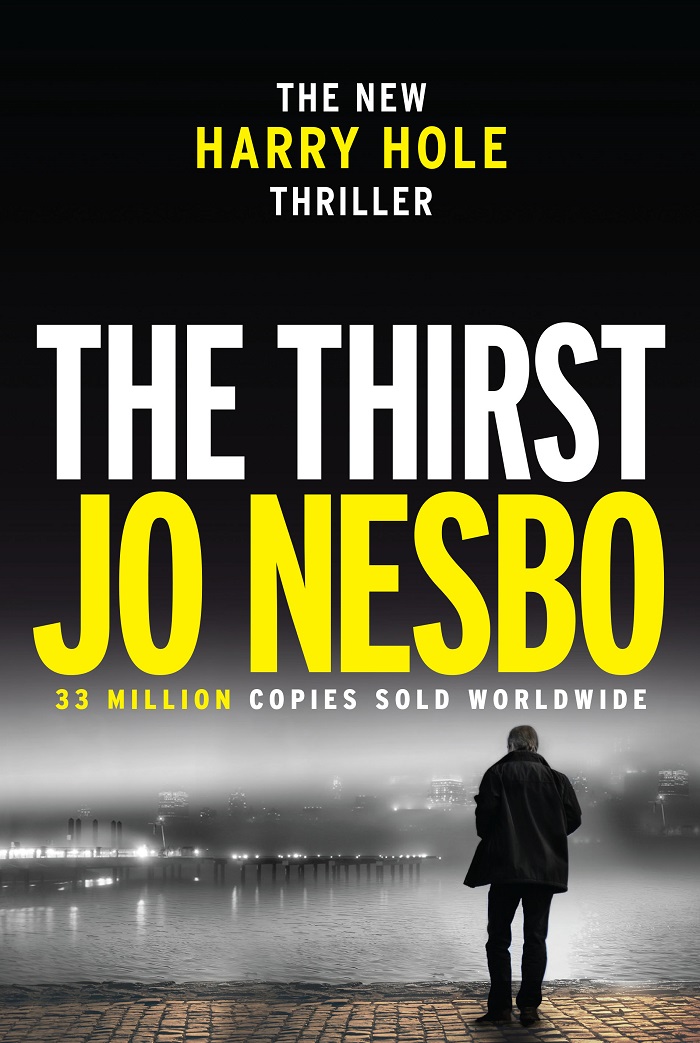The jacket designs of Jo Nesbø’s Harry Hole thrillers don’t muck about. The novelist’s name with its anglicised spelling is branded in eye-catching upper-case yellow, accompanied by the latest sales figures. "Over five million copies sold worldwide" – that was several crime novels ago. It has since gone up in vertical increments: nine million, 18 million, 23 million, 30 million. The current tally on the 11th case for Oslo detective Harry Hole is 33 million.
The Thirst arrives four years on from Police, and is sort of a sequel. In Police a series of policemen were killed by gruesome means. As is often the way with Hole’s cases, the perpetrator was hiding in plain sight: he was a colleague lecturing at the same police academy to which Hole had retreated having left the Oslo police department. The case was solved, but another killer roamed free: escaped convict Valentin Gjertsen, who on the last page of Police was on the brink of raping the pubescent daughter of his psychotherapist.
Gjertsen is still at large in The Thirst. He has been lying low, having undergone further facial surgery to make himself unrecognisable, but there’s no scrubbing away the lurid death-mask tattoo emblazoned on his chest. When a series of single women are murdered in their homes after Tinder dates, it doesn’t take long for a V signed in blood, as well as Valentin’s DNA, to show up at the crime scene. But Valentin’s lust for young flesh has transmuted into something altogether more bowel-shrivelling: a thirst for the blood of his victims, which he extracts by donning a set of iron jaws.
Hole would rather give the case a wide berth: his marriage to Rakel is going swimmingly, his alcohol addiction in abeyance while all his wounds, both psychic and physical, are apparently healed. But he’s soon blackmailed by the despicably ambitious Chief of Police Mikael Bellman – who calls him a predator, not a herbivore - to help catch the blood-sucking killer.
He’s keen to enlist his psychotherapist colleague Ståle Aune to help, but Aune is now a family man trying to coax his daughter Aurora through her miserable teenage years, little realising that it is she who was raped by Gjertsen. Step forward the garrulous Hallstein Smith, who is eager to use the killer’s specialist predilection to promote his theories about vampirism, which for lack of proof have hitherto found him ostracised from the psychology profession.
 The first death is what Hole calls “a could have been me murder”. This is an Oslo where men and women have outsourced the hunt for sex and/or romance to a dating app. Even Hole’s new boss Katrine Bratt – the Bergen cop who’s been on meds since going batshit bonkers in The Snowman - regularly swipes for shags. But the murders themselves are spectacularly lurid. The Thirst is another highly competent if thoroughly bonkers excursion into Nesbø’s sick brand of Nordic noir. Something about the high latitude induces grandiose Scandi villains into behavioural extremism – see also The Bridge.
The first death is what Hole calls “a could have been me murder”. This is an Oslo where men and women have outsourced the hunt for sex and/or romance to a dating app. Even Hole’s new boss Katrine Bratt – the Bergen cop who’s been on meds since going batshit bonkers in The Snowman - regularly swipes for shags. But the murders themselves are spectacularly lurid. The Thirst is another highly competent if thoroughly bonkers excursion into Nesbø’s sick brand of Nordic noir. Something about the high latitude induces grandiose Scandi villains into behavioural extremism – see also The Bridge.
With each novel there’s a sense in which Nesbø has to give himself a higher bar to clear. The Snowman, published a decade ago, recounted his tussle with Norway’s first serial killer. Since then he’s had nothing but serial killers to deal with. Nesbø peppers the narrative with entertaining tracts of psychological underpinning, There are contextualising allusions in The Thirst to Othello syndrome, the morality of meat-eating, and a particularly blood-curdling tribe of Native Americans. They may be steeped in deep research and may be utter baloney. But they're fun.
In the end the reason to come back for more is the sheer magnetism of Harry Hole. He detests being good at his job, but is unable to avoid utter commitment to it, for which the cost is high: there’s always someone close to him in grievous danger, and Hole is forever playing the sacrificial lamb who gives his blood and even expendable bits of his body to protect the public, and do honour to the victims. “The dead take priority over the living,” he says.
The Thirst like its stablemates is a bulky but zippy 500-pager which never loiters in one place for long. Nesbø keeps you guessing with his usual bag of tricks, making everyone seem a little suspect (or almost everyone). His cynicism about bent coppers and unscrupulous journalists is an inexhaustible and entertaining sideshow. Perhaps, and not for the first time, he gives a little too much credence to the fantasy that a psychopath can carry on his work while keeping up a plausible exterior. What that means is that two thirds of the way in it feels as if every bow has been satisfactorily tied up, but Hole can’t leave the case alone, triggering a climax of breakneck, baroque delirium.
In short, if you liked the other ten, you’ll greedily sink your teeth into this. And maybe by the time it appears in paperback many more millions will have been sold. Later this year Hole makes his big screen debut in the guise of Michael Fassbender, who is the right height but nothing like ugly enough. The Snowman is directed by Tomas Alfredson, who made Let the Right One In and Tinker Tailor Soldier Spy. It's about time Harry Hole became a movie star.















Add comment